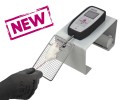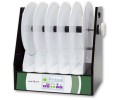Authors
C Marie-Helene, M Valérie, D Julie, et al
Lab
Journal
Experimental Neurology
Abstract
Children with low physical activity and interactions with environment experience atypical sensorimotor development and maturation leading to anatomical and functional disorganization of the sensorimotor circuitry and also to enduring altered motor function. Previous data have shown that postnatal movement restriction in rats results in locomotor disturbances, functional disorganization and hyperexcitability of the hind limb representations in the somatosensory and motor cortices, without apparent brain damage. Due to the reciprocal interplay between the nervous system and muscle, it is difficult to determine whether muscle alteration is the cause or the result of the altered sensorimotor behavior (Canu et al., 2019). In the present paper, our objectives were to evaluate the impact of early movement restriction leading to sensorimotor restriction (SMR) during development on the postural soleus muscle and on sensorimotor performance in rats, and to determine whether changes were reversed when typical activity was resumed. Rats were submitted to SMR by hind limb immobilization for 16 h / day from birth to postnatal day 28 (PND28). In situ isometric contractile properties of soleus muscle, fiber cross sectional area (CSA) and myosin heavy chain content (MHC) were studied at PND28 and PND60. In addition, the motor function was evaluated weekly from PND28 to PND60. At PND28, SMR rats presented a severe atrophy of soleus muscle, a decrease in CSA and a force loss. The muscle maturation appeared delayed, with persistence of neonatal forms of MHC. Changes in kinetic properties were moderate or absent. The Hoffmann reflex provided evidence for spinal hyperreflexia and signs of spasticity. Most changes were reversed at PND60, except muscle atrophy. Functional motor tests that require a good limb coordination, i.e. rotarod and locomotion, showed an enduring alteration related to SMR, even after one month of ‘typical’ activity. On the other hand, paw withdrawal test and grip test were poorly affected by SMR whereas spontaneous locomotor activity increased over time. Our results support the idea that proprioceptive feedback is at least as important as the amount of motor activity to promote a typical development of motor function. A better knowledge of the interplay between hypoactivity, muscle properties and central motor commands may offer therapeutic perspectives for children suffering from neurodevelopmental disorders.
BIOSEB Instruments Used:
Grip strength test (BIO-GS3),Rotarod (BX-ROD),Aron Test or Four Plates Test (LE830)

 Pain - Thermal Allodynia / Hyperalgesia
Pain - Thermal Allodynia / Hyperalgesia Pain - Spontaneous Pain - Postural Deficit
Pain - Spontaneous Pain - Postural Deficit Pain - Mechanical Allodynia / Hyperalgesia
Pain - Mechanical Allodynia / Hyperalgesia Learning/Memory - Attention - Addiction
Learning/Memory - Attention - Addiction Physiology & Respiratory Research
Physiology & Respiratory Research
 Pain
Pain Central Nervous System (CNS)
Central Nervous System (CNS) Neurodegeneration
Neurodegeneration Sensory system
Sensory system Motor control
Motor control Mood Disorders
Mood Disorders Other disorders
Other disorders Muscular system
Muscular system Joints
Joints Metabolism
Metabolism Cross-disciplinary subjects
Cross-disciplinary subjects Preclinical studies and opioids: role in crisis management in the United States
Preclinical studies and opioids: role in crisis management in the United States 
